The coronavirus pandemic is still impacting travel, and destinations around the world have different COVID-19 restrictions in place. Always check and adhere to local government policies, and use our content to dream about a future trip.
1. Maroon Bells — Colorado
Choosing a standout spot in Colorado is tough: There’s the sand dunes, the San Juan Mountains, and endless waterfalls and mountain passes. But IMO there’s just nothing that comes close to the Maroon Bells. Maybe it’s the way the snow gives the mountains stripes or how they’re mirrored by Maroon Lake below. Either way, it’s the sort of thing you have to see in real life to truly appreciate. Just keep in mind that the secret is out. If you want to visit you’ll need to plan in advance and make a reservation. For an effort worthy of the reward, rent a bike and make the 16.2-mile round-trip ride to the base of the Bells.
2. The Wave — Arizona
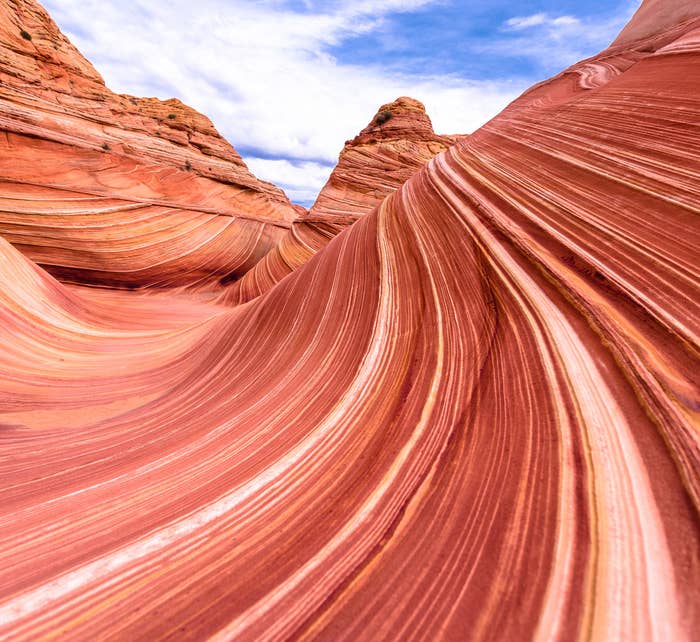
Certain natural wonders are just jaw-dropping and the Wave is one such wonder. Here, layer upon layer of red rock creates a perfectly fluid wave (that, yes, is made of rock). And as you’d expect from a sight that you’ll never forget, it isn’t always easy to visit. You’ll need to score one of the 64 daily permits to Coyote Buttes North to see it. But if you can secure a spot, it’s well worth the effort.
3. Grand Tetons — Wyoming
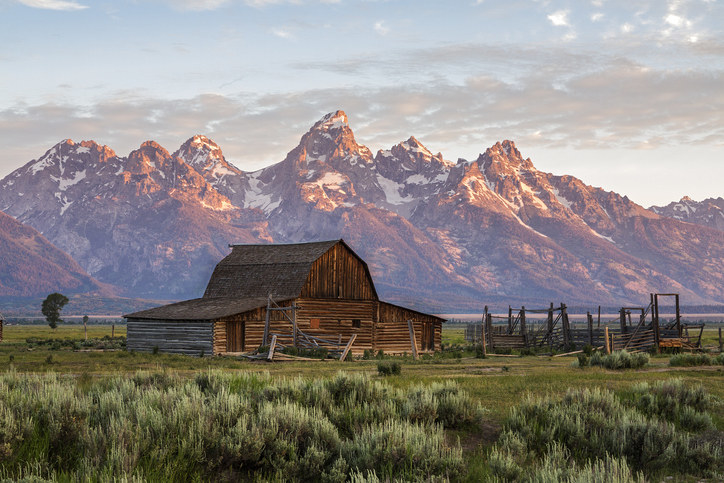
There are plenty of beautiful mountain ranges in the US, but none are as visually stunning as the Tetons. Unlike most mountains, which are buffered by foothills, these ones seem to rise up out of the plains, making the visual just a lil’ extra awe-inspiring. You can get up close and personal with the Tetons (which FYI means “teat” or “nipple” in French) at Grand Teton National Park, where you can take in the views from your paddleboard at Jenny Lake or from the trail on your way to Taggart Lake.
4. White Sands National Park — New Mexico

Yayaernst / Getty Images
Chances are when you hear the words “white sand,” your imagination takes you to the shores of the Maldives or Tahiti. But there’s enough stark white sand to make any beach lover drool in the unsuspecting state of New Mexico (which also happens to be landlocked). In the state’s White Sands National Park, mounds of sand made of gypsum crystals create dunes that are perfect for sand sledding and hiking (if you can manage to put down your camera).
5. Shoshone Falls — Idaho
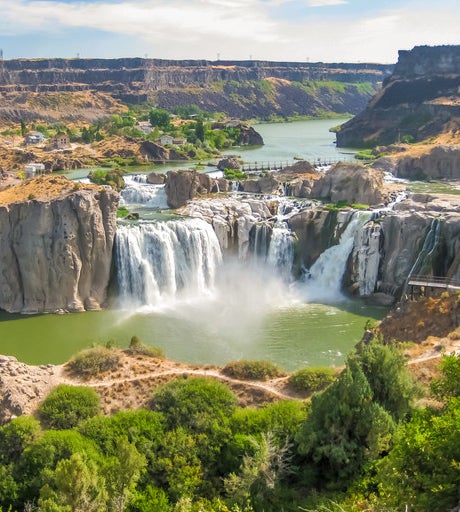
Shoshone Falls (aka the “Niagara of the West”) is even higher than its more renowned cousin: The falls are 212 feet tall, 45 feet higher than Niagara Falls. But it isn’t just about size. These Idaho falls are surrounded by vistas that only the West can provide and a two-mile hike will take you to one of Evel Knievel’s jump sites (a mission that was NOT successful).
6. Skagit Valley — Washington
If flowers are your thing, you don’t have to travel to Holland or battle California’s superbloom crowds to get your fix. You just have to make it to Washington’s Skagit Valley. There, you’ll find rows and rows of colorful flowers and festivals celebrating them: Daffodils reign supreme in March, while tulips follow in April.
7. Hawaii Volcanoes National Park — Hawaii

There are a million places more beautiful in Hawaii, but when it comes to unbelievable sights Hawaii Volcanoes National Park has everything beat. By a lot. That’s because the park’s two volcanoes — Kīlauea and Mauna Loa — are both active and Kīlauea is currently erupting. There is nothing so humbling as seeing geological forces create new land; it’s a phenomenon you can witness when you check out the Halema’uma’u Crater viewpoint or cruise along Crater Rim Drive.
Just keep in mind this is an erupting volcano, so if you visit, be sure to stay on marked trails and avoid cliff edges and earth cracks. In addition, if you have heart or respiratory problems, you may want to check the air quality before you go, as the the escaping volcanic gases are hazardous.
8. Mendenhall Ice Caves — Alaska
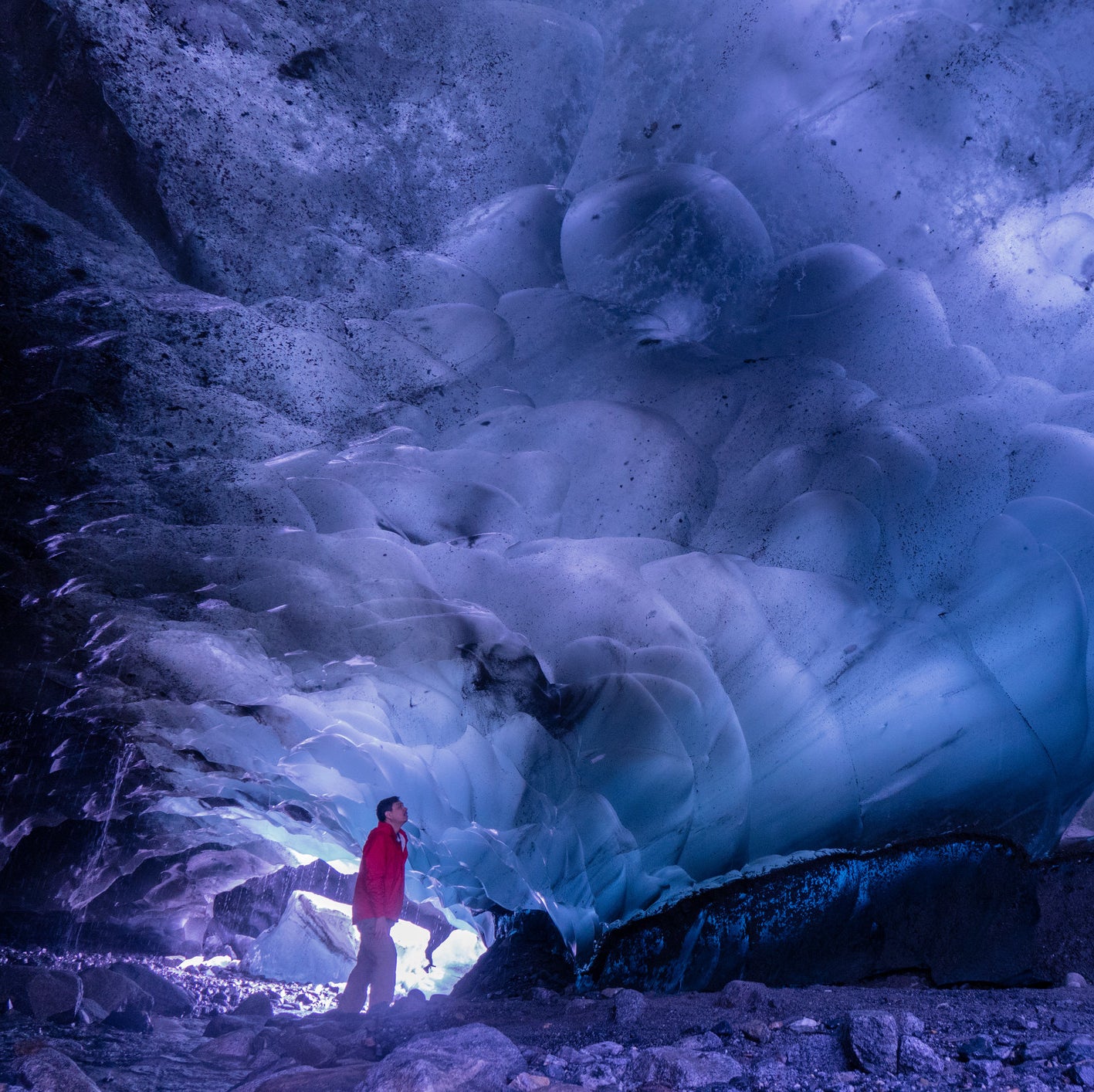
Just 12 miles from Juneau is the Mendenhall Glacier, and while it may not be as big as the Hubbard Glacier (or get as much attention), it offers visitors a little something extra: the chance to go inside it. That’s right. When water flows through the glacier, it forms a passageway or cave, allowing you to literally walk through/under a glacier. Pretty amazing. Of course, you’ll want to go with an expert guide and keep your expectations in check: Glaciers are always changing, so a cave that’s there one day may be gone the next.
9. Mammoth Cave National Park — Kentucky
The world’s longest known cave system — Mammoth Cave — is right here in the US. And while a whopping 412 miles have been mapped, explorers are still discovering new passages. At Mammoth Cave National Park, you can travel underground in this naturally formed wonder that was created over several million years by underground rivers and streams. Along the way, you’ll see artifacts left behind by historic and prehistoric dwellers of Mammoth Cave.
10. Barataria Preserve — Louisiana
Imagine strolling through 26,000 acres of lush, hyper-green wetlands teeming with snakes, turtles, alligators, and the occasional bobcat. It’s the norm at Barataria Preserve, which sits within the Jean Lafitte National Historical Park and Preserve just 17 miles from New Orleans. If you’ve been dreaming of donning your safari hat and heading into the ~wild~, this is the spot.
11. Cherry Springs State Park — Pennsylvania

You can come to Cherry Springs State Park for the hiking or the large stands of black cherry trees the park was named after, but the park really shines (quite literally) at night. The precise location of the park (41.6501 degrees north, 77.8164 degrees west) provides a peek into the nucleus of the Milky Way. And if that isn’t cool enough, the park, approved by the International Dark-Sky Association, also has an astronomy field that gives visitors a 360-degree view of the night sky from the top of a 2,300-foot high mountain.
12. Cadillac Mountain — Maine
Cadillac Mountain sits within Acadia National Park on an island in the Atlantic Ocean. If that wasn’t cool enough, it’s also the highest point on the East Coast (hello, 1,530 feet) and the first place to view the sunrise in the US during most of the year. You can drive to the top via Summit Road; but if you’re up for the challenge, I’d say summit Cadillac Mountain. The views are incredible, and huffing and puffing your way to the peak is half the fun.
13. Florida’s Coral Reef — Florida
Australia’s Great Barrier Reef gets all the attention, but Florida has its own reef. And it just so happens to be the third-largest barrier reef ecosystem in the world. Not bad, Florida!
The reef runs from St. Lucie Inlet (north of West Palm Beach) to the Dry Tortugas and houses 80 species of coral, 5 types of turtles and jellyfish, and 20 shark species. When the time comes to grab your snorkel or, better yet, some dive gear so you can witness this underwater world for yourself, make sure to book with a Blue Star guiding company that supports education and conservation of this fragile ecosystem.
14. Thor’s Well — Oregon

There’s something amazing and almost disturbing about watching the ocean be sucked continually into a giant sinkhole. This breathtaking spot off the coast of Oregon near Cape Perpetua appears to endlessly (and violently) swallow sea water. And while it’s estimated that the hole is only around 20 feet deep, the effect is surreal and a little scary. Thor’s Well looks the most dramatic at high tide or during a storm, but keep in mind that while this is the best time to see the natural wonder, it can also be extremely dangerous if you wander too close so always keep a safe distance. If you want more, hike to the nearby Spouting Horn or Devil’s Churn, where the power of the ocean is again on full display.
15. Rainbow Falls — New York
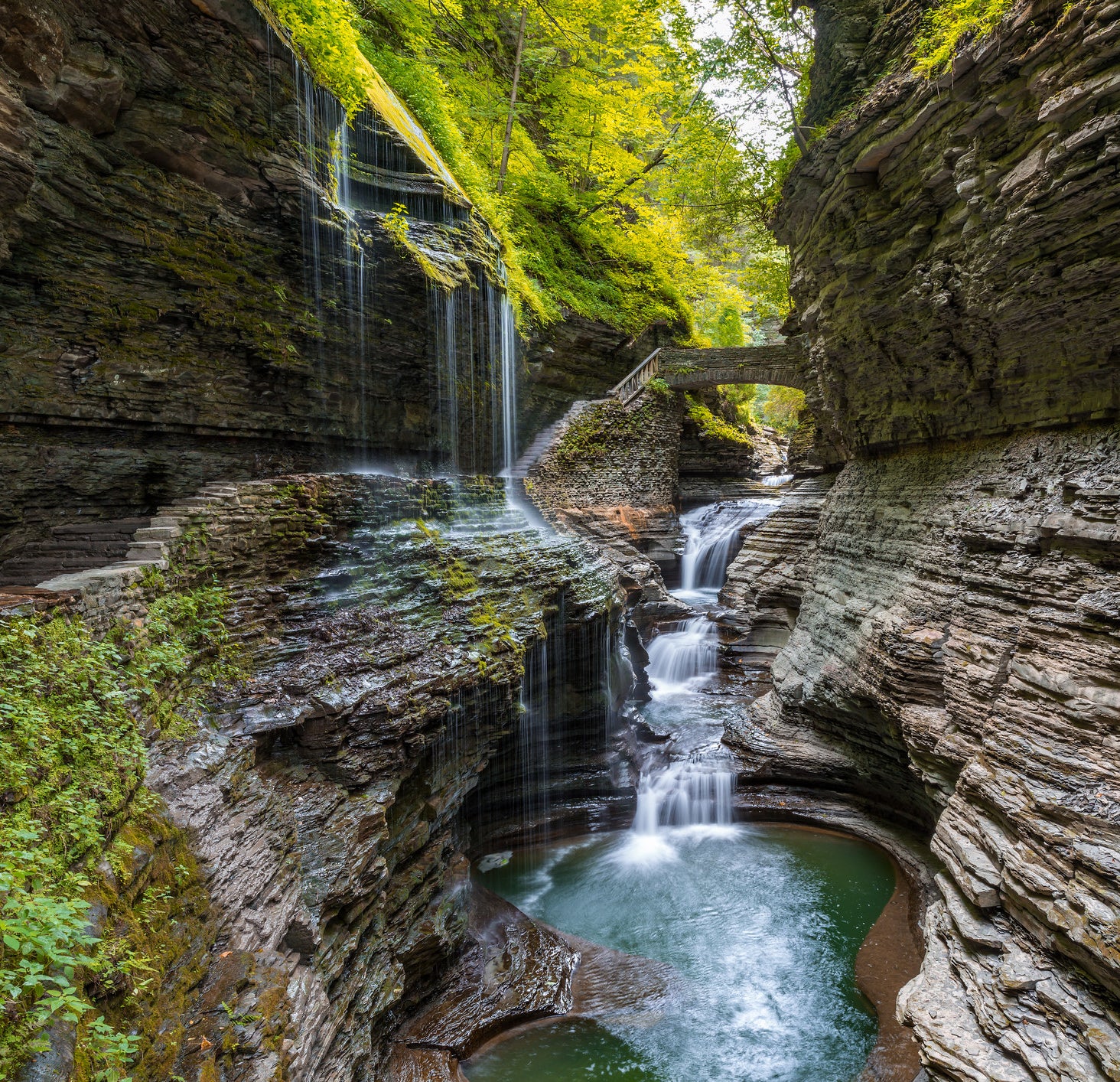
It’s hard to believe this fairyland exists in New York, which is most known for Niagara Falls and man-made wonders like the Empire State Building. But exist it does, and those who make the trip to Watkins Glen State Park in the state’s Finger Lakes region will be rewarded with views of a stunning gorge crafted by 19 waterfalls and natural pools. From the park’s Gorge Trail, you’ll pass through the Glen of Pools area — deep pools surrounded by layered rock — before hitting Rainbow Falls. From there, make your way under (yes, under the falls!) as you peer over the edge at the pools below.
16. Fairyland Canyon — Utah
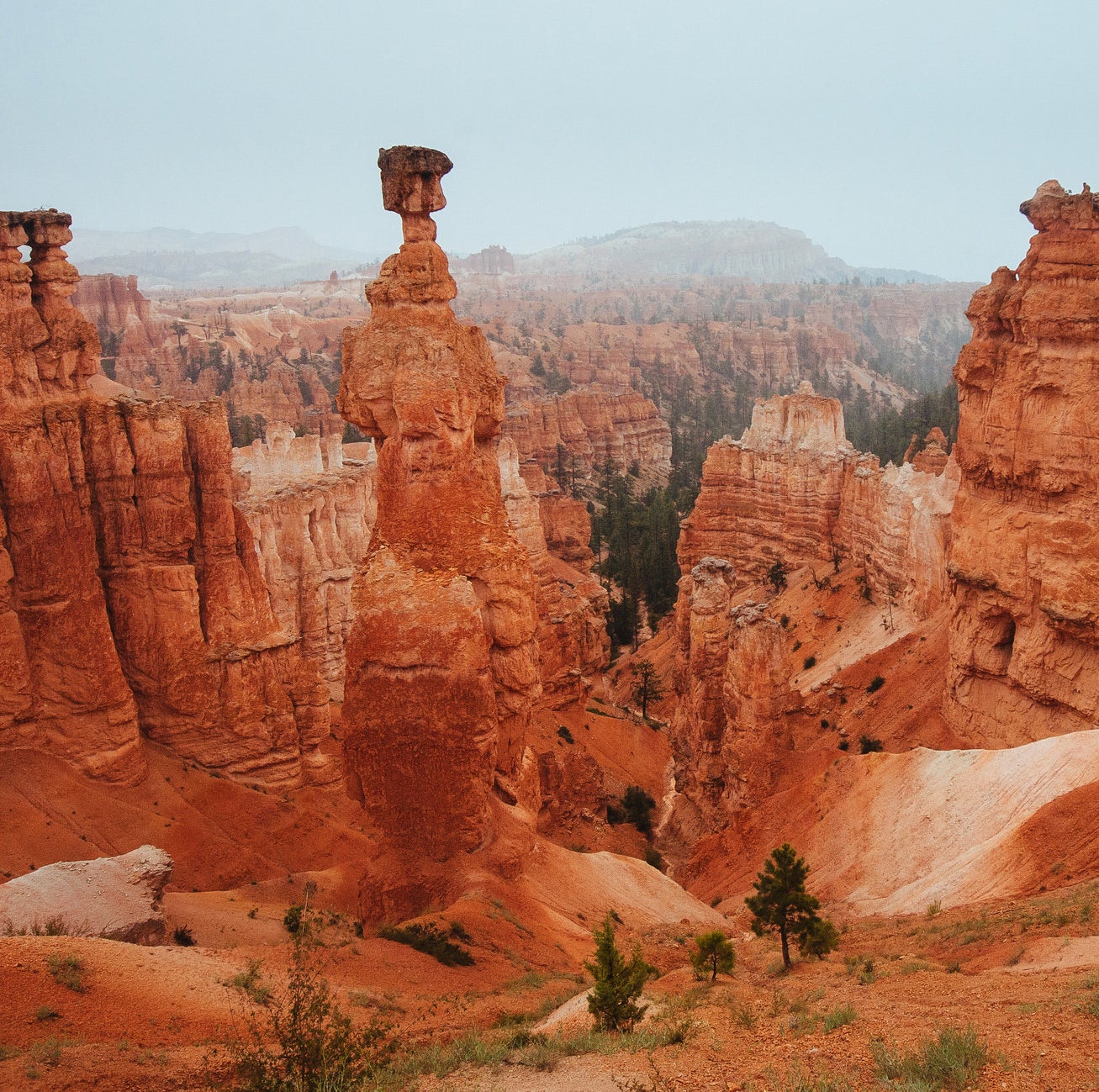
Fairyland Canyon in Bryce Canyon National Park is one of those otherworldly, once-in-a-lifetime destinations. To get eye level with the canyon’s orangish red hoodoos (tall, thin spires of rock), adventurous travelers can follow the Fairyland Loop trail, a strenuous eight-mile hike that’ll take between four and five hours. For a more mellow excursion (that’s paved in parts), hop on the Rim Trail at the Fairyland Canyon overlook and make your way toward Bryce Point. You’ll get views of the hoodoos and Main Amphitheater from above, and you can turn around anytime.
17. Hyperion — California
According to NPR, Hyperion may no longer be the tallest tree on Earth, but that doesn’t make it any less impressive. Hyperion, a redwood in California, is recorded to be about 379 feet tall. It’s a tough one to see in person (as it’s found on a steep slope in a remote part of Redwood National Park), but you’ll find plenty like it in the park, including some you can walk through.








